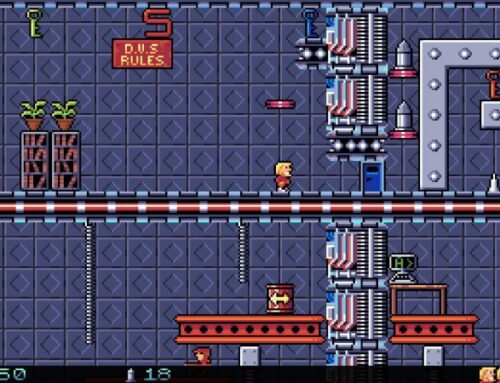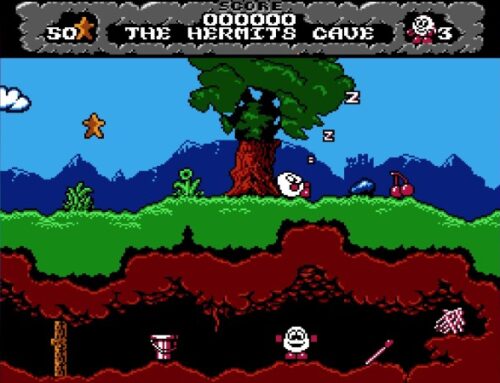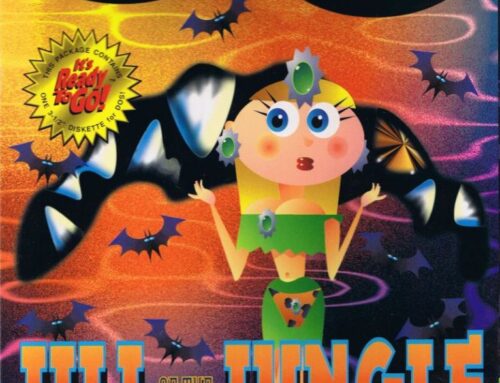Splatterhouse is a classic 1988 horror game from Namco, and there are a variety of ways you can play it today — the most recent and readily accessible of which include the excellent Namco Museum on Switch, or the PC Engine Mini, if you were lucky enough to nab one.
It’s also a very interesting game to look back on from a modern perspective, given how popular horrific, gory games have become as the gaming medium has matured.

In Splatterhouse, you take on the role of Rick Taylor, an unfortunate university student who found himself possessed by an ancient Mayan Terror Mask and forced to trudge his way through the titular mansion in an attempt to defeat the fleshy evil within. And perhaps save his girlfriend if he’s lucky. Spoiler: he isn’t.
The game unfolds as a side-scrolling action game, presented similarly to a belt-scrolling beat ’em up. There’s an important difference, though: while most belt-scrollers play in “2.5D”, allowing players to move “in” and “out” of the screen as well as walking left and right or jumping, Splatterhouse plays resolutely in 2D. The visual style is still used to great effect to provide a sense of “depth”, though; hazards emerge from the foreground and background, and many of Rick’s attacks splatter his foes against the back wall in an immensely satisfying, violent manner.
Rick begins with the simple ability to punch and sweep-kick, but each level tends to have various weapons lying around. Some of these are melee weapons that increase Rick’s damage at the expense of attack speed, while others are thrown weapons that can be used once. There are even a few guns with limited ammunition in the game, too, though these are few and far between and thus should be used carefully and wisely. This latter aspect would come to be a key part of the later “survival horror” genre established by games such as Infogrames’ Alone in the Dark and Capcom’s Resident Evil.

Progression through Splatterhouse is mostly from left to right, though some levels offer branching paths where falling, jumping or being dragged unwillingly down a hole leads to an alternative route. These diverging paths always reconvene before the end of the level, however, and each stage concludes with a boss fight of some description.
The game is presented well and still holds up marvellously in this regard today, featuring some extremely well-drawn pixel art in a muted colour palette, plus a deeply disturbing soundtrack that makes masterful use of atonality and physically uncomfortable audible frequencies (mostly in the high-pitched range) to really set the player on edge as they play.
And, unusually for an arcade game, it discourages credit-feeding by putting you right back to the start of a stage when you use a continue, thereby preventing you from being able to “brute-force” your way through a particularly difficult challenge. Want to see the end? Better get practising!

Where Splatterhouse really gets interesting, though, is not in its basic gameplay, structure and technical aspects of its presentation, but rather in how all its disparate elements combine together to form a convincing homage to both Lovecraftian horror and the popular slasher movies of the 1980s.
One of the game’s most defining elements in this regard is its very slow, deliberate pacing. Rick moves slowly, he jumps slowly and even the fade out at the end of levels or between lives is just slightly too slow to be comfortable. This isn’t to say the game is unresponsive, mind; quite the opposite. A simple snap of the stick from one direction to the other will immediately turn Rick around ready to wail on a foe behind him, and his basic punches and kicks can be unleashed as quickly as you can hammer the button. Given how frequently Rick comes under attack from all sides, responding quickly to threats is an essential skill to master.
Rather, the game features a curious juxtaposition between horrific imagery that a normal person would probably want to flee from, and a rather sedate, almost relaxed pace of movement and onward progression. This can be seen as an homage to the common, clichéd trope of the slasher genre where the antagonist of the hour slowly advances on his next victim, and said victim’s death scene is long, drawn out and inevitable well before it actually happens. The fact that Rick’s masked form bears more than a passing resemblance to Jason Voorhees from the Friday the 13th series is doubtless no coincidence in this regard, either.

Herein lies another interesting aspect; in other games of the era, we were typically set up to be “the hero” — someone indisputably “good” battling against the forces of darkness. Splatterhouse, meanwhile, was one of the earliest high-profile examples of a game allowing us to play as something of an anti-hero: we’re still battling against a greater evil, but given the context of the game’s overall premise, our motivations for doing so are murky at best. Plus, as with many good horror stories from over the years — especially Lovecraft’s — there’s always the question of whether the things you’re seeing are actually real — and if they’re not, do you really want to know what it is you’re really doing?
Splatterhouse is disgusting, with enemies exploding into gory entrails and tortured, mutilated corpses lining the levels, but it’s also comedically absurd — again, like good horror, particularly Lovecraftian. The scariest things of all are the things we dream up from our own imagination — but those things are also the most ridiculous to describe either out loud or when written on paper. Splatterhouse’s second stage concludes with a boss fight where you punch a chair to death; stupid on paper, terrifying in context. And this is far from the only example. It’s good horror that goes well beyond dark rooms and jump scares — though there’s a few of those here and there — and as such it is still very much worth your time from a modern perspective.
While Splatterhouse may have lost some of its original impact thanks to the (over)prevalence of gory, violent media (interactive or otherwise) today, it remains an interesting example of a developer in the late ’80s doing something a little different to the norm. It paid off for Namco; the game spawned several sequels, ports and remakes over the years, and is still fondly regarded by many gamers today.

It’s classic horror, in other words. And with spooky season upon us, you could certainly do far worse than spending an hour or two pulling on a Terror Mask and punching some baby corpses into green goo to celebrate. And hey, it’d be pretty sweet to see it on Evercade sometime, eh?





